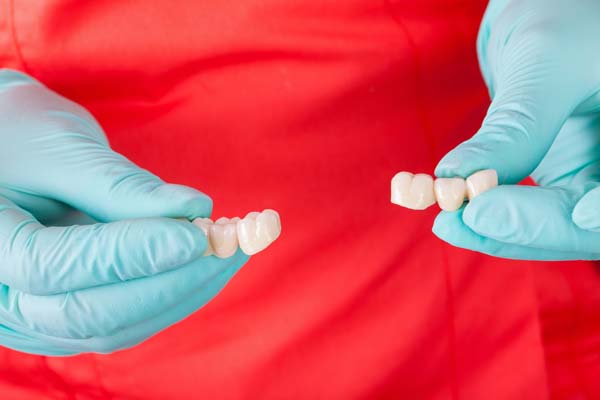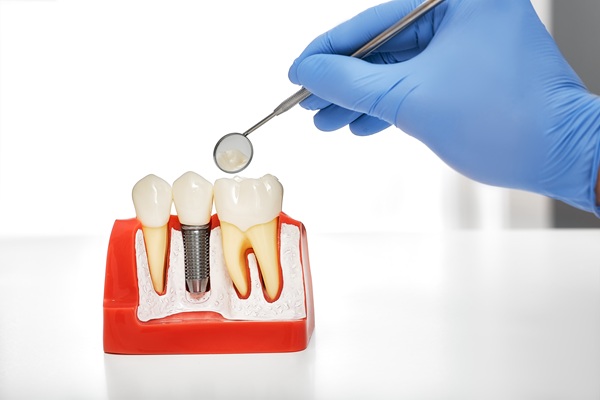4 Popular Dental Bridge Solutions

A dental bridge is one of the most popular solutions for lost teeth. According to the American Dental Association, most adults between ages 20 and 64 have at least one or two decayed or missing teeth. Fortunately, with a dental bridge, a dentist can cover the gap between the teeth to restore your smile.
4 Commonly-used dental bridge solutions
The following are some of the more popular dental bridge options that a dentist may recommend:
1. Traditional dental bridges
These are the most common type of bridges available. These bridges consist of one or more false teeth that are supported by dental crowns. These crowns are also known as abutments and are cemented over the teeth on the sides of the missing tooth. This option is often used when a patient has healthy teeth adjacent to the gap.
Dental bridges are reliable enough to restore lost molars. The downside of traditional bridges is that the enamel of the abutment teeth needs to be scraped to create room for the crowns that will cover them. Since the enamel will not regenerate, those teeth will always need to receive crowns, even if patients decide to switch to another teeth restoration option.
2. Cantilever bridges
Cantilever bridges are another popular bridge solution for restoring lost teeth. Although they are identical to traditional bridges, the pontic is held in place on one side alone by the abutment instead of both sides. Therefore, if only one natural tooth is adjacent to the gap, the bridge can still be stable.
As with conventional bridges, the dentist will prepare the adjacent tooth for a crown by filing it down. Since the restoration is only held on one side, they may function as a lever in some situations, and this may cause complications such as loose crowns or fractured teeth. The dentist will continually monitor the bridge to ensure it remains stable.
3. Maryland bridges
Maryland bridges are regarded as a conservative alternative to traditional bridges. These bridges consist of a pontic supported by a porcelain or metal framework. The framework is fixed to the back of the two teeth on the sides of the missing teeth. This type of bridge is not supported by dental crowns, which means there is no need to file down the adjacent teeth.
Although Maryland bridges are conservative, they have their limitations. The stability of the bridge depends on the strength of the bond holding it. It may not be ideal for teeth that have to withstand significant chewing force.
4. Implant-supported bridges
Implant-supported bridges can be used when more than one tooth is missing. Unlike other bridge options that are supported by crowns and frameworks, these bridges are supported by dental implants. Usually, one implant is inserted for each tooth. Depending on the number of missing teeth, the prosthetic teeth can rest on one or two implants inserted inside the jaw.
Are you missing any teeth?
A dentist can close gaps between your teeth and restore your smile with a dental bridge. With multiple options available to choose from, you can rest assured that the general dentist will have a suitable solution for your condition.
Request an appointment here: https://oakstreetfamilydental.com or call Oak Street Family Dental at (925) 301-4289 for an appointment in our Brentwood office.
Check out what others are saying about our dental services on Yelp: Dental Bridges in Brentwood, CA.
Recent Posts
When you need dental bridges, your dentist will work with an oral surgeon to find the best solution for your problem. There are a few things that you can do in preparation for this procedure. This blog post outlines some of the steps you should take before going in for dental bridges surgery.Make a list…
It is helpful to understand the different types of dental bridges to determine why your dentist may recommend a specific one. All dental bridges accomplish the same goal, which is to replace a missing tooth or a section of missing teeth. However, depending on the patient’s goals and the status of their oral health, a…
A dental bridge is a common dental restoration used for replacing lost teeth, whether the loss was due to trauma, structural damage, infection or decay. The dental bridge is as the name implies; a bridge over the gap created by a missing tooth. The teeth on the sides of the gap function as anchors and…
Same-day crowns are now achievable due to CEREC® technology, which combines modern technology with significant advances in dentistry. Patients with fragile, fractured, damaged, or broken teeth may now have their dental condition assessed and even get a new dental crown designed and installed during one visit to the dentist's office. If you are considering CEREC…


